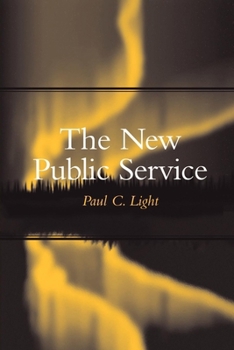New Public Service
Select Format
Select Condition 
Book Overview
According to Paul C. Light's controversial new book, The New Public Service, this January's 4.8 percent federal pay increase will do little to compensate for what potential employees think is currently missing from federal careers. Talented Americans are not saying ""show me the money"" but ""show me the job."" And federal jobs just do not show well.
All job offers being equal, Light argues that the pay increase would matter. But all offers are not equal. Light's research on what graduates of the top public policy and administration graduate programs want indicates that the federal government is usually so far behind its private and nonprofit competitors that pay never comes into play.
Light argues that the federal government is losing the talent war on three fronts. First, its hiring system for recruiting talent, top to bottom, underwhelms at almost every task it undertakes. Second, its annual performance appraisal system is so inflated that federal employees are not only all above average, they are well on their way to outstanding. Third and most importantly, the federal government is so clogged with needless layers and convoluted career paths that it cannot deliver the kind of challenging work that talented Americans expect.
None of these problems would matter, Light argues, if the government-centered public service was still looking for work. Unfortunately, as Light's book demonstrates, federal careers were designed for a workforce that has not punched since the 1960s, and certainly not for one that grew up in an era of corporate downsizing and mergers. The government-centered public service is mostly a thing of the past, replaced by a multisectored public service in which employees switch jobs and sectors with ease.
Light concludes his book by offering the federal government a simple choice: It can either ignore the new public service and troll further and further down the class lists for new recruits, while hoping that a tiny pay in"






